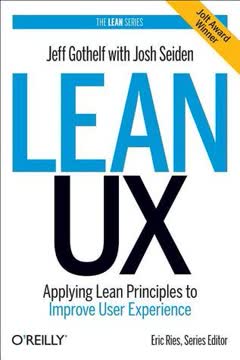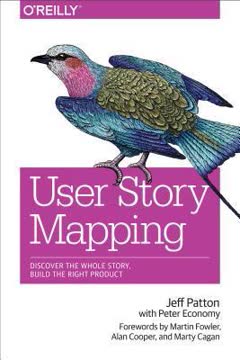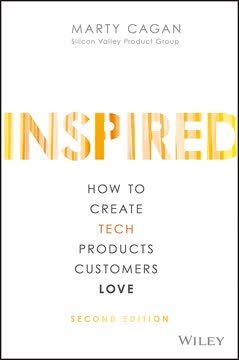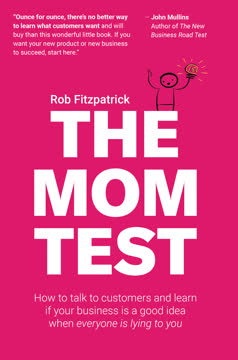النقاط الرئيسية
1. فخ التركيز على الإنتاج: الانشغال بالمخرجات بدل النتائج
تقع الشركات في فخ التركيز على الإنتاج عندما تسيء فهم القيمة. فبدلاً من ربط القيمة بالنتائج التي تسعى لتحقيقها لأعمالها وعملائها، تقيس القيمة بعدد المنتجات التي تنتجها.
تركيز غير متوافق. يحدث هذا الفخ عندما تعطي المؤسسات الأولوية لكمية الميزات التي تُطلق على حساب القيمة الحقيقية المقدمة للعملاء وللشركة. هذا الخلل يؤدي إلى هدر الموارد، وانخفاض حماس الفرق، وإنتاج منتجات لا تلبي احتياجات العملاء.
عواقب الوقوع في الفخ:
- تراجع الحصة السوقية
- زيادة التعرض للمنافسة والاضطراب
- انخفاض رضا العملاء
- استخدام غير فعال للموارد
- نقص في الابتكار
للهروب من هذا الفخ، يجب على الشركات تحويل تركيزها من المخرجات (الميزات المطروحة) إلى النتائج (القيمة المضافة). وهذا يتطلب تغييراً جوهرياً في العقلية، والعمليات، والبنية التنظيمية.
2. إدارة المنتج: المفتاح للتحول إلى قيادة المنتج
يجب على مدير المنتج المتميز أن يكون قادراً على التواصل مع أقسام الأعمال، والتقنية، والتصميم، واستثمار معارفهم المشتركة.
جسر التخصصات. يلعب مديرو المنتجات دوراً محورياً في ربط مختلف جوانب المؤسسة لابتكار منتجات ناجحة. عليهم تحقيق توازن بين احتياجات العملاء، وأهداف العمل، والجدوى التقنية لدفع تطوير المنتج.
المسؤوليات الأساسية لمديري المنتجات:
- فهم وتوضيح مشاكل العملاء
- مواءمة استراتيجية المنتج مع أهداف العمل
- التعاون مع فرق التصميم والهندسة
- تحديد أولويات الميزات والمبادرات
- قياس والتواصل حول نجاح المنتج
لكي تصبح المؤسسة موجهة بالمنتج، يجب الاستثمار في تطوير قدرات إدارة المنتج وتمكين مديري المنتجات من اتخاذ قرارات استراتيجية.
3. الإطار الاستراتيجي: مواءمة الرؤية، النوايا، والمبادرات
الاستراتيجية هي إطار عمل قابل للتنفيذ لاتخاذ القرارات، يمكّن من العمل لتحقيق النتائج المرجوة، مع مراعاة القدرات الحالية، ومتسق مع السياق القائم.
الترابط الهرمي. يربط الإطار الاستراتيجي الجيد رؤية الشركة بأفعال ملموسة عبر مستويات متعددة من الاستراتيجية. هذا الترابط يضمن أن جميع الجهود تسهم في تحقيق الأهداف العامة للمؤسسة.
مستويات الاستراتيجية:
- الرؤية: الهدف الطموح طويل الأمد
- النوايا الاستراتيجية: مجالات التركيز متوسطة الأمد
- مبادرات المنتج: مشاكل محددة يجب حلها
- الخيارات: الحلول المحتملة للاستكشاف
من خلال إنشاء هذا الإطار والتواصل به داخل المؤسسة، يمكن للشركات اتخاذ قرارات أفضل وتخصيص الموارد بشكل أكثر فعالية.
4. كاتا المنتج: نهج منهجي لحل المشكلات
كاتا المنتج هو العملية التي نكتشف من خلالها الحلول الصحيحة للبناء. إنه طريقة منظمة تعلم مديري المنتجات كيفية التعامل مع بناء المنتجات من منظور حل المشكلات.
التعلم التكراري. يوفر كاتا المنتج نهجاً منظماً لتطوير المنتجات يركز على التعلم المستمر والتحسين. باتباع هذه العملية، يمكن لفرق المنتج معالجة المشكلات بشكل منهجي والتحقق من صحة الحلول.
خطوات كاتا المنتج:
- فهم الاتجاه والحالة الحالية
- تحديد الحالة المستهدفة التالية
- التعرف على العقبات
- إجراء تجارب لتجاوز العقبات
- التفكير والتعديل
يساعد هذا النهج الفرق على تجنب القفز إلى الحلول قبل الأوان، ويضمن بناء المنتجات استناداً إلى تعلمات مؤكدة.
5. التجريب: البناء من أجل التعلم لا من أجل الربح
التجريب من أجل التعلم هو الأساس. نحن لا نصنع منتجات مستقرة، قوية، وقابلة للتوسع من البداية. غالباً ما لا نعرف ما هو الحل الأفضل حتى نبدأ بالتجريب. وهذا هو الهدف من هذه العملية.
التعلم المؤكد. التجريب ضروري لتقليل عدم اليقين والتحقق من الفرضيات قبل تخصيص موارد كبيرة لبناء المنتج. بالتركيز على التعلم بدلاً من الربح الفوري، يمكن للفرق اتخاذ قرارات أكثر وعيًا وتجنب الأخطاء المكلفة.
أنواع التجارب:
- الكونسيرج: تقديم الحل يدوياً
- ساحر أوز: محاكاة الأتمتة خلف الكواليس
- اختبار المفهوم: قياس الاهتمام بالحلول المحتملة
- النمذجة الأولية: إنشاء نسخ منخفضة الدقة من المنتجات
يتطلب التجريب الفعال ثقافة تشجع التعلم وتقبل احتمال الفشل.
6. تحديد الأولويات وتكلفة التأخير: تعظيم قيمة التسليم
تكلفة التأخير هي قيمة رقمية تصف تأثير الوقت على النتائج التي تأمل في تحقيقها. تجمع بين العجلة والقيمة لتمكنك من قياس التأثير وتحديد الأولويات لما يجب القيام به أولاً.
الأثر الاقتصادي. فهم تكلفة التأخير يساعد الفرق على اتخاذ قرارات أفضل في تحديد الأولويات من خلال مراعاة قيمة المبادرة وعجلة تنفيذها. هذا النهج يضمن تركيز الفرق على الأعمال ذات التأثير العالي التي تقدم قيمة بسرعة.
عوامل يجب مراعاتها في تحديد الأولويات:
- قيمة العمل
- أهمية الوقت
- تقليل المخاطر أو تمكين الفرص
- الجهد المطلوب
باستخدام تكلفة التأخير كإطار لتحديد الأولويات، يمكن للفرق تحسين عملية تطوير المنتج وتقديم قيمة أكبر للعملاء وللشركة.
7. بناء منظمة موجهة بالمنتج: الثقافة، التواصل، والحوافز
إذا كنت قائداً في شركة، فقد حان الوقت لإعادة تقييم كيفية تحفيز الأشخاص. يجب أن تكافئ الناس على دفع العمل قدماً—تحقيق النتائج، التعلم عن المستخدمين، واكتشاف الفرص التجارية المناسبة.
الانسجام التنظيمي. أن تصبح منظمة موجهة بالمنتج يتطلب أكثر من مجرد تطبيق عمليات جديدة أو توظيف مديري منتجات. إنه يتطلب تحولاً جوهرياً في الثقافة، والتواصل، والحوافز عبر الشركة بأكملها.
العناصر الأساسية للمنظمة الموجهة بالمنتج:
- تواصل يركز على النتائج
- مكافآت وحوافز متوافقة مع التعلم وخلق القيمة
- ثقافة أمان نفسي تشجع على التجريب
- تعاون شفاف وعبر الوظائف
- تعلم مستمر وتكيف دائم
من خلال مواءمة هذه العناصر، يمكن للشركات خلق بيئة تزدهر فيها ثقافة التفكير المنتج والابتكار، مما يؤدي في النهاية إلى منتجات أفضل ونتائج أعمال متميزة.
آخر تحديث::
FAQ
What's "Escaping the Build Trap" about?
- Focus on Value Creation: "Escaping the Build Trap" by Melissa Perri is about shifting organizations from a feature-focused mindset to one that prioritizes value creation for both the business and its customers.
- Product Management Role: The book defines the role of product management in creating a product-led organization that consistently delivers real value.
- Strategic Framework: It provides a strategic framework for aligning product development with business goals and customer needs.
- Organizational Change: The book emphasizes the need for organizational change to support effective product management practices.
Why should I read "Escaping the Build Trap"?
- Understand Product Management: It offers a comprehensive understanding of what effective product management entails and how it can drive business success.
- Avoid Common Pitfalls: The book helps identify and avoid common pitfalls in product development, such as focusing on outputs rather than outcomes.
- Practical Advice: Melissa Perri provides actionable advice and frameworks that can be applied to real-world product management challenges.
- Organizational Alignment: It guides readers on how to align their organization’s strategy, processes, and culture to support product-led growth.
What are the key takeaways of "Escaping the Build Trap"?
- Value Over Features: Focus on delivering value rather than just shipping features.
- Strategic Alignment: Align product strategy with business goals and customer needs.
- Role of Product Managers: Product managers should be empowered to make decisions that drive value creation.
- Organizational Support: Successful product management requires organizational support, including the right culture, processes, and incentives.
What is the "build trap" according to Melissa Perri?
- Definition: The build trap is when organizations measure success by outputs (features shipped) rather than outcomes (value delivered).
- Symptoms: It often results in a reactive approach to product development, where teams are busy building features without understanding their impact.
- Consequences: Companies in the build trap risk losing market share and failing to meet customer needs effectively.
- Solution: Escaping the build trap involves shifting to a product-led approach that focuses on strategic value creation.
How does Melissa Perri define a product-led organization?
- Value-Driven: A product-led organization prioritizes product success as the primary driver of business growth and value.
- Strategic Alignment: It aligns product strategy with business objectives and customer needs.
- Empowered Teams: Product teams are empowered to make decisions and are held accountable for delivering outcomes.
- Cultural Shift: The organization supports a culture of learning, experimentation, and customer-centricity.
What is the Product Kata, and how is it used?
- Definition: The Product Kata is a systematic approach to uncovering the right solutions to build, focusing on problem-solving and experimentation.
- Steps: It involves setting a goal, understanding the current state, identifying obstacles, experimenting with solutions, and learning from outcomes.
- Iterative Process: The process is iterative, encouraging continuous learning and adaptation based on feedback and results.
- Application: It helps product teams focus on delivering value by systematically tackling problems and validating solutions.
What are the roles and responsibilities of a product manager according to "Escaping the Build Trap"?
- Value Creation: Product managers are responsible for creating value by aligning product development with business goals and customer needs.
- Strategic Decision-Making: They make strategic decisions based on data, customer insights, and market research.
- Cross-Functional Collaboration: Product managers work closely with design, development, and business teams to ensure cohesive product development.
- Outcome Focused: They focus on achieving outcomes rather than just delivering outputs.
How does "Escaping the Build Trap" suggest organizations should handle strategy?
- Framework Over Plan: Strategy should be a decision-making framework, not a detailed plan, allowing for flexibility and adaptation.
- Alignment: Align strategy with company vision and strategic intents to ensure cohesive direction across the organization.
- Deployment: Deploy strategy through clear communication and alignment at all levels, from vision to product initiatives.
- Continuous Evaluation: Regularly evaluate and adjust strategy based on outcomes and market changes.
What are some of the best quotes from "Escaping the Build Trap" and what do they mean?
- "The build trap is when organizations become stuck measuring their success by outputs rather than outcomes." This quote highlights the core issue of focusing on feature delivery rather than value creation.
- "A good strategy should transcend the iterations of features, focusing more on the higher-level goals and vision." It emphasizes the importance of aligning product development with strategic goals.
- "Product managers are the ones who fit right in the middle and translate needs into a product that will satisfy the customer while sustaining and growing the business." This quote defines the critical role of product managers in bridging business and customer needs.
How does "Escaping the Build Trap" address the issue of organizational culture?
- Customer-Centric Culture: The book advocates for a culture that prioritizes understanding and meeting customer needs.
- Learning and Experimentation: It encourages a culture of learning and experimentation to drive innovation and value creation.
- Outcome-Oriented: Organizations should focus on achieving outcomes rather than just delivering outputs.
- Supportive Environment: A supportive environment is necessary for product managers to succeed, including the right incentives and safety to experiment.
What is the role of metrics in "Escaping the Build Trap"?
- Actionable Metrics: Metrics should be actionable and tied to business outcomes, not just vanity metrics that look impressive but offer little insight.
- System of Metrics: Use a system of metrics to provide a comprehensive view of product health and progress toward goals.
- Leading and Lagging Indicators: Balance leading indicators (predictive) with lagging indicators (outcome-based) to guide decision-making.
- Continuous Measurement: Regularly measure and evaluate metrics to ensure alignment with strategic goals and customer needs.
How does "Escaping the Build Trap" suggest handling product roadmaps?
- Living Roadmaps: Roadmaps should be dynamic and continuously updated to reflect current strategy and progress.
- Strategic Communication: Use roadmaps to communicate strategy and development stages to different audiences, including sales and leadership.
- Stages of Development: Clearly define stages of development (Experiment, Alpha, Beta, GA) to manage expectations and align teams.
- Alignment with Goals: Ensure roadmaps align with strategic goals and are not just a list of features to be delivered.
مراجعات
يحظى كتاب "الهروب من فخ البناء" بإشادة واسعة من القراء، حيث حصل على تقييم متوسط بلغ 4.3 من 5. يشيد العديد من المراجعين بالنصائح العملية التي يقدمها في مجال إدارة المنتجات وبناء المنظمات التي تقودها المنتجات. يتميز الكتاب بشرحاته الواضحة، وأمثلته القريبة من الواقع، وتركيزه على النتائج بدلاً من المخرجات فقط. رغم أن بعض القراء وجدوا أن قسم الاستراتيجيات أقل جذبًا، إلا أن الكتاب يُعتبر بشكل عام مصدرًا قيّمًا لمديري المنتجات، والتنفيذيين، ولكل من يهتم بالمنظمات التي تركز على المنتج. ويوصي به عدد من المراجعين كقراءة ضرورية لكل من يعمل في أدوار مرتبطة بالمنتجات.
Similar Books















